What does IVF involve?
In Vitro Fertilisation (IVF-ICSI) is an assisted reproduction technique in which the egg is fertilised by a spermatozoid in the laboratory (in vitro) rather than inside the woman’s body.
This type of treatment requires an ovarian stimulation treatment in order to obtain several eggs which we will collect during the egg retrieval procedure and, once fertilised in the laboratory, place inside the mother’s uterus to achieve a pregnancy.
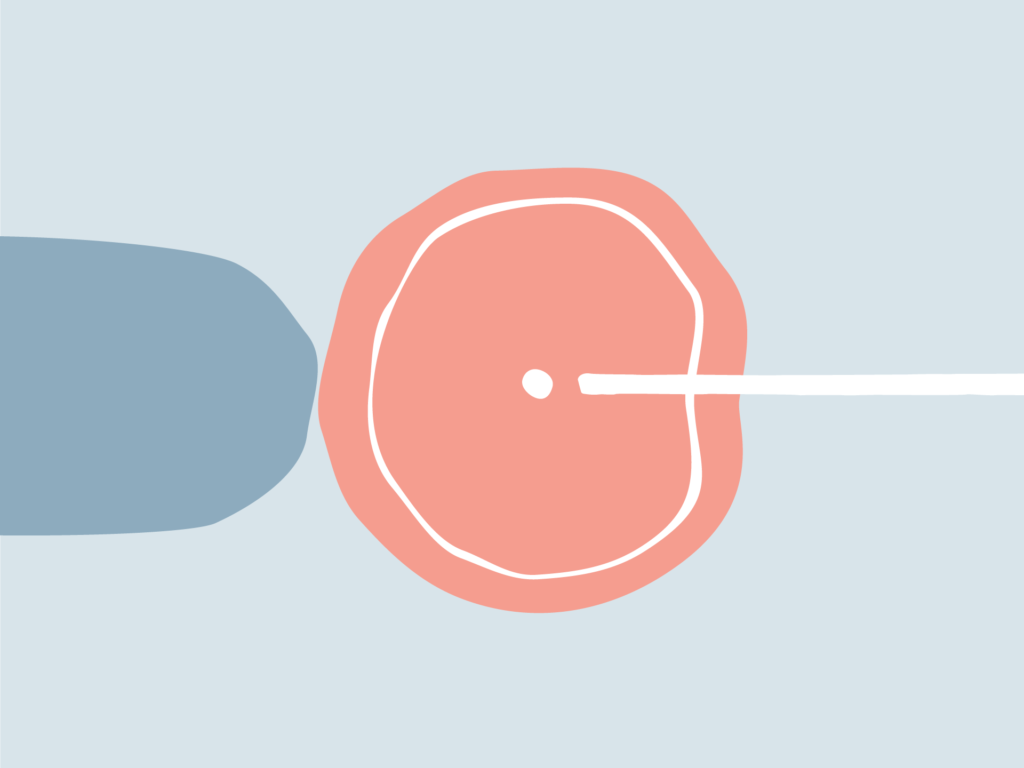
Types of In Vitro Fertilisation (IVF-ICSI)
In Vitro Fertilisation
with Partner Sperm
In Vitro Fertilisation
with Donor Sperm
In Vitro Fertilisation
Natural Cycle
Stages of IVF
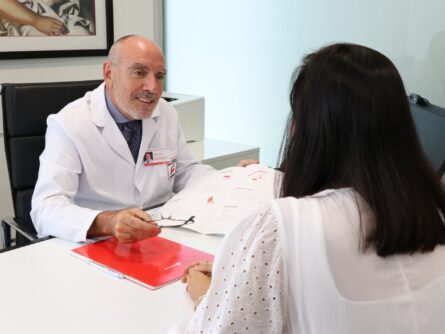
Initial consultation and diagnosis
We always evaluate the patients’ complete medical history: ages, amount of time the patients have been trying to conceive, personal and family medical history and any gynaecology/urology history. Additionally, other tests will be ordered in order to run a basic fertility workup: assessment of egg quality, sperm study including REM, confirmation of tubal permeability, Genetic Compatibility Testing and chromosome analysis (recommended).
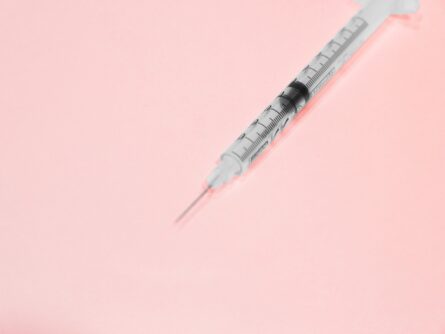
Ovarian stimulation
The stimulation normally begins on the third day of the menstrual cycle. There are different protocols (long and short), but all aim to stimulate egg production. This stage generally takes about 10 days and requires approximately three ultrasound scans. Once the follicles have reached the optimal size, ovulation will be triggered and the egg retrieval will be performed 35 to 38 hours later.
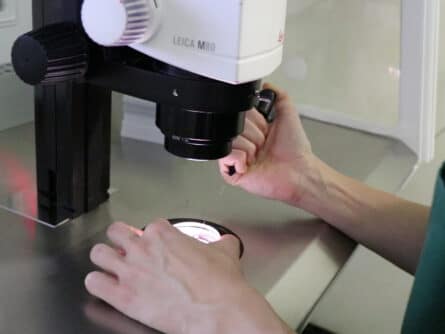
Egg retrieval
The egg retrieval procedure is performed through the vagina and light sedation is used. The aspirated liquid is processed in the laboratory where the eggs are obtained.
If you are undergoing IVF-ICSI with partner sperm, the male partner will need to provide a sperm sample on the day of egg collection. If donor sperm will be used, a sample will be thawed that same day in order to fertilise your eggs.
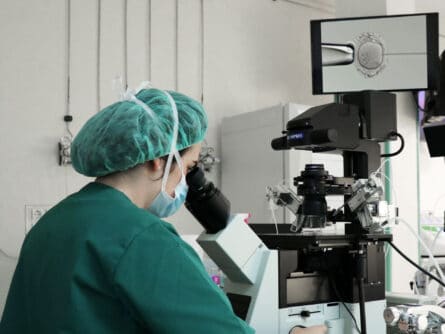
Laboratory techniques and embryo culture
Fertilisation is normally performed using sperm microinjection (ICSI), a technique in which a spermatozoid is injected into each egg with the help of a microneedle. Following this process the embryos will remain in the laboratory for a few days until it’s the best time to transfer them. Special laboratory techniques may be used in certain cases to improve results.
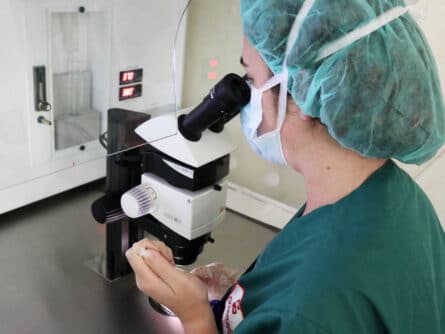
Embryo transfer
The embryo transfer involves depositing the embryos in the uterus using a very thin catheter which is passed through the cervix. The transfer is painless and is normally carried out five days after the egg collection procedure. According to Spanish law, three embryos is the maximum a patient can transfer at a time.
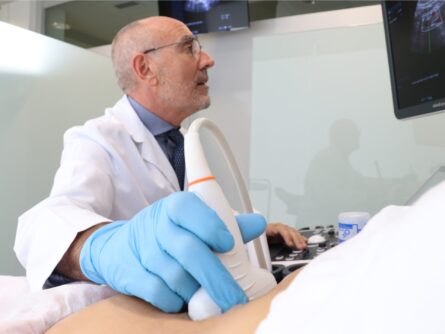
Pregnancy test and confirmation
A blood test called B-HCG (beta) is performed to see if the patient is pregnant about 12 days after the embryo has been transferred. Never stop taking your medication, regardless of your result, until you have first spoken with your gynaecologist and have received instructions concerning the next steps.
The first ultrasound scan will be performed to confirm the type of pregnancy (singleton or multiple), and the presence of a heartbeat about 15 days after the B-HCG analysis.
What will my treatment be like if I don’t live in Spain?
We know that when a woman decides she wants to become a mother she is making one of the most important decisions of her life. Because the desire to be a mother is one that crosses all races, languages and borders, our International Department wants to be by your side when you need it most in order to make your journey as pleasant as possible. Our International Department is made up of native coordinators who will accompany you before, during and after your pregnancy.
We’ll assign you a doctor and a native coordinator
Who will assist you in your native language from the moment you first contact us.
You’ll only need to make one trip to Spain
Which you’ll be able to arrange far enough in advance so that you can book hotels, flights and time off from work. The rest of your appointments can be carried out remotely: by video-call, phone or email.
1st visit is cost-free
If you’d like to meet us in person and undergo all of the preliminary testing with us.
Preliminary testing and ultrasounds during treatment
This can also be done in your country with your gynaecologist. We’ll send you all the necessary instructions.
We’ll adapt to you.
With the necessary resources to get started once you’re ready. No waiting times.

Natural Cycle IVF
Natural Cycle In Vitro Fertilisation is an IVF-ICSI treatment (fertilisation of the egg by a spermatozoid in the laboratory using ICSI), performed during the female’s natural cycle without any ovarian stimulation, thus without medication.
The egg, after maturing naturally, is collected during the egg retrieval procedure just before ovulation occurs naturally. This egg is fertilised in our laboratory and is cultured until it reaches the optimal stage of embryo development, at which point it will be transferred to the mother’s uterus to achieve a pregnancy.
This treatment makes it possible to forgo hormonal medication, in turn considerably reducing costs and eliminating the risk of hyper stimulation and twin/triplet gestations.
-Success rates-
IVF ICSI success rates at Ginemed are around 65% for double embryo transfers carried out on Day +5 (blastocyst stage), confirmed by a positive Beta HCG.
At any rate, success rates depend on the woman’s age (as fertility declines as a female ages), on the number of embryos transferred and on their quality.
With natural cycle IVF treatments, results will, for the most part, depend on the age of the woman and her egg quality. With this type of treatment, success rates are around 30%, confirmed by a positive fetal heartbeat.
The risk of miscarriage or fetal abnormalities once a pregnancy has been achieved is the same as in a natural pregnancy.
Pregnancy rates by Beta HCG
First fertility visit is free
Request your first appointment cost-free at the clinic closest to you
Frequently asked questions about IVF
In Vitro Fertilisation (IVF-ICSI) is recommended in the following cases:
- Tubal factor infertility. Abnormalities in the Fallopian Tubes which prevent sperm and eggs from meeting and joining together naturally.
- Severe male factor infertility. If the number or quality of spermatozoids is inadequate for a cycle of artificial insemination (REM < 5 million).
- Cervical factor infertility. Cases of endometriosis and polycystic ovaries, illnesses which lead to functional abnormalities that complicate processes such as ovarian stimulation, egg quality, fertilisation of eggs or embryo implantation; advanced maternal age, ovarian failure and diminished ovarian reserve.
- Unexplained infertility. This generally results in fertilisation abnormalities or poor quality during embryo development.
- Previous failed artificial insemination cycles. When, after undergoing 3 cycles of insemination, a pregnancy has not been achieved.
- Patients who previously had eggs frozen through a cycle of Fertility Preservation.
Generally speaking, all of the mature eggs obtained following the ovarian stimulation and egg retrieval procedure will be fertilised so that the best embryos can be selected for transfer, thus optimising treatment and increasing the likelihood of a pregnancy in the shortest amount of time.
In certain cases, some of the eggs obtained can be frozen for the future while the rest will be fertilised.
In Vitro Fertilisation (IVF) is an assisted reproduction technique in which the egg is fertilised by a spermatozoid in the laboratory rather than inside the woman’s body. The purpose is to create embryos which will later be transferred to the woman’s uterus.
This requires an ovarian stimulation process in order to mature several eggs which will be collected during the egg retrieval procedure while the patient is sedated. Following fertilisation, the embryos that have been created will remain in the laboratory until it’s the best time to transfer them to the uterus.
The In Vitro Fertilisation process normally begins on the second or third day of the menstrual cycle. That’s when an ultrasound scan will be performed to confirm that both ovaries are inactive before starting the process of stimulation. The treatment protocol to be used will be personalised and will be dependent upon the gynaecologist’s assessment of your case. The stimulation will last about 10-12 days, and during this time 2 or 3 ultrasound scans will be performed until the follicles have reached the optimal size.
The embryo transfer will be carried out 3 or 5 days following egg collection. Following transfer, the patient will need to wait 10-12 days before taking the pregnancy test (BhCG blood test) to confirm a pregnancy.
Success rates with In Vitro Fertilisation mainly depend on the reasons behind the patients’ infertility and the treatment that is prescribed, as each patient case is unique as is each treatment cycle.
The age of the female is one of the most important factors given that a woman’s fertility declines as she ages. The chances of achieving a pregnancy with own eggs after the age of 42 is less than 10%.
At Ginemed, our success rates surpass the national and international averages and are audited externally. You can view our annual results here or find out your chances directly by contacting us.
During in vitro fertilisation treatment, as the ovaries are stimulated and several follicles mature and develop causing them to increase in size, it’s possible for the patient to note abdominal swelling, a feeling of heaviness, swelling in the legs, etc. These symptoms can appear beginning around the fifth or sixth day of stimulation and disappear after the egg collection has been performed. The symptoms are generally mild and temporary.
You can continue with your usual activities and there are no restrictions, though you should avoid stress to the extent possible and make sure to get enough rest. In addition, you should avoid contact with toxins and get at least 30 minutes of physical activity daily, such as walking. What’s good for our health is good for reproduction.
The day of the embryo transfer is one of the most exciting days of assisted reproduction treatment. On this day, the embryos which will make the future pregnancy possible are transferred to the woman’s uterus.
Choosing the best time for the transfer largely depends on embryo development in the laboratory. In a natural pregnancy, the embryo implants in the uterus after 5-6 days of development. This means that Day 0 is the day that the egg is fertilised by the spermatozoid, which in IVF translates to the day of egg collection and the sperm sample. That’s why when an embryo continues developing properly until Day 5 and reaches blastocyst stage, the chances of pregnancy increase due to the fact that:
- The best quality embryos can be selected for transfer.
- This improved selection process makes it possible to transfer the best embryo and just one at a time, avoiding the risk of a multiple pregnancy.
- The uterus is more receptive.
A delayed embryo transfer is one in which the embryo transfer is performed using embryos that were frozen directly after the In Vitro Fertilisation (IVF) cycle for either personal or medical reasons.
The vitrification (freezing) process generally takes place on day 5 or 6 of embryo development, which is when the embryos have reached blastocyst stage. According to embryologists, this is the best time to carry out the embryo transfer as the embryos which correctly reach this stage are of the best quality and, in turn, have better survival rates post-thawing.
This type of treatment makes it possible to transfer good quality embryos that were frozen after the IVF cycle rather than being transferred in a fresh IVF transfer cycle, in turn increasing cumulative success rates.
